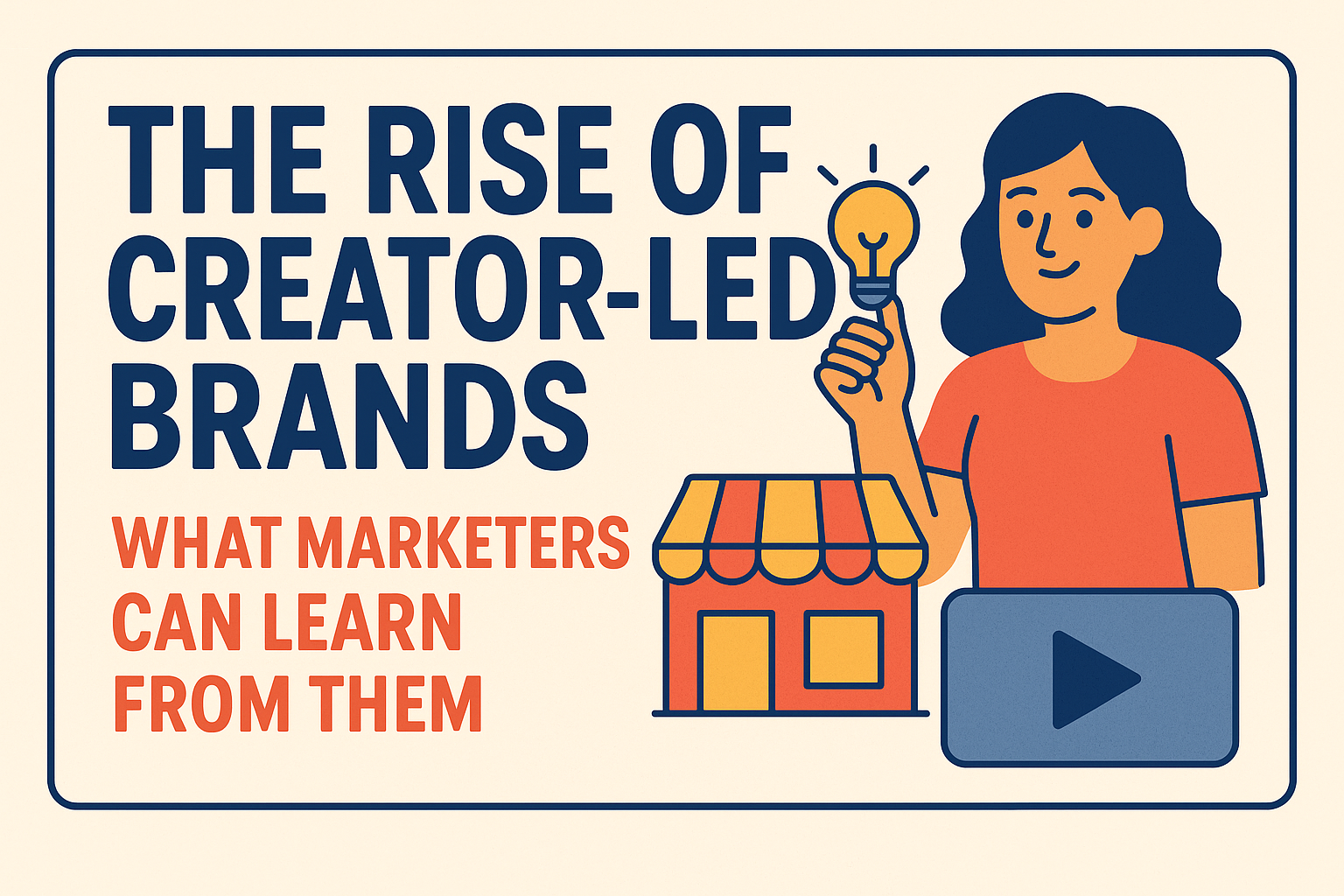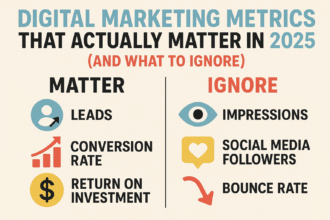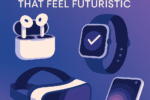The Rise of Creator-Led Brands: What Marketers Can Learn From Them
In today’s digital economy, creator-led brands are no longer a niche trend—they’re reshaping the very foundation of modern marketing. From independent YouTubers launching multi-million-dollar companies to TikTok creators building loyal customer bases that rival legacy brands, the rise of creator-led businesses highlights a profound shift in consumer behavior. People trust people, not faceless corporations. For marketers, the lesson is clear: authentic storytelling, community-first strategies, and personality-driven branding are now essential to success.
—
What Are Creator-Led Brands?
Creator-led brands are businesses founded and built by individuals with strong personal brands, usually social media influencers, content creators, or thought leaders. Unlike traditional companies that rely on institutional branding, these brands leverage the personality, trust, and community of their founder as their primary marketing asset.
- Example 1: Emma Chamberlain, a YouTube star, launched Chamberlain Coffee, which rapidly scaled thanks to her loyal fanbase and authentic storytelling.
- Example 2: MrBeast (Jimmy Donaldson) turned his massive YouTube audience into a multi-channel empire, including Feastables and MrBeast Burger.
- Example 3: In the B2B space, individuals like Sahil Bloom have launched creator-first businesses around education, finance, and entrepreneurship.
—
Why Are Creator-Led Brands Rising?
The rise of creator-led brands is powered by several macro trends:
1. Decline of Traditional Advertising Trust
According to Edelman’s Trust Barometer (2024), only 30% of consumers say they trust traditional advertising, while 70% trust recommendations from people they follow online. This trust gap creates fertile ground for creators to build brands directly with their communities.
2. Rise of the Creator Economy
By 2025, the global creator economy is valued at over $250 billion (Source: Goldman Sachs, 2023), with millions of creators monetizing through content, brand partnerships, and direct-to-consumer products.
3. Technology Democratization
E-commerce platforms like Shopify, digital-first supply chains, and AI-driven marketing tools have lowered barriers to entry, allowing creators to launch products faster and cheaper than ever before.
—
What Marketers Can Learn From Creator-Led Brands
1. Authenticity Over Perfection
Creator-led brands thrive because they prioritize realness over polish. Instead of sterile brand messaging, creators share personal stories, behind-the-scenes processes, and unfiltered experiences. For example, Glossier scaled by treating its community like collaborators, not customers.
2. Community as a Competitive Advantage
Creators don’t just have audiences—they have communities. They engage directly, respond to feedback, and co-create products with fans. This approach builds loyalty and reduces customer acquisition costs.
3. Storytelling as Core Marketing
Brands like Chamberlain Coffee didn’t succeed because of fancy ads—they thrived through authentic storytelling. Every product, launch, and campaign connects to the creator’s journey.
4. Leveraging Multi-Channel Distribution
Successful creator-led brands operate across multiple platforms—YouTube, Instagram, TikTok, podcasts, and newsletters. This diversification reduces reliance on algorithms and strengthens brand presence.
5. Data-Driven Decisions
Many creator-led businesses excel at using audience insights. They monitor engagement metrics, product feedback, and community sentiment to guide product launches and marketing campaigns.
—
Case Studies of Successful Creator-Led Brands
MrBeast: Scaling Personality into a Global Empire
MrBeast’s content-first approach allowed him to launch Feastables, a chocolate brand that generated over $10M in sales in its first year. His formula: use viral content to drive awareness, build trust through transparency, and funnel audiences into owned products.
Chamberlain Coffee: Lifestyle Meets Authenticity
Emma Chamberlain’s coffee brand is a masterclass in lifestyle marketing. By aligning the product with her daily routines and aesthetic, she created a relatable brand narrative. In 2023, Chamberlain Coffee raised $7M in funding, showcasing the scalability of creator-led ventures.
Kylie Cosmetics: From Influencer to Beauty Mogul
Kylie Jenner leveraged her massive social following to launch Kylie Cosmetics, which sold out its first product line in minutes. While her scale is unique, the principle applies broadly: influence + trust = immediate market penetration.
—
Challenges of Creator-Led Brands
Despite the hype, creator-led brands face unique challenges:
- Overreliance on Personality: If the creator loses relevance, so does the brand.
- Scaling Beyond a Niche: Expanding from a loyal community to a mainstream audience can be difficult.
- Operational Complexity: Many creators excel at storytelling but struggle with supply chain, logistics, and scaling operations.
—
Future Trends in Creator-Led Branding (2025 and Beyond)
- AI-Powered Personalization: Creators will increasingly use AI tools to personalize offers, scale customer service, and optimize content.
- Decentralized Platforms: Blockchain-based ownership and fan tokens will allow fans to literally invest in their favorite creators.
- Hybrid Models: Expect collaborations between traditional corporations and creator-led brands (e.g., Nike partnering with TikTok stars).
—
Actionable Strategies for Marketers
- Study the creator economy to understand audience-driven brand building.
- Invest in building community-first strategies, not just paid ads.
- Collaborate with creators for co-branded products instead of one-off sponsorships.
- Adopt storytelling techniques in campaigns—focus on human experiences, not corporate jargon.
- Prepare for the long game: brand building through creators requires patience and consistency.
—
The rise of creator-led brands represents one of the biggest shifts in marketing since the dawn of social media. These brands thrive on authenticity, community, and storytelling—values that resonate deeply with today’s consumers. For marketers, the key takeaway is not to imitate creators but to learn from them: build genuine trust, engage with audiences, and turn communities into advocates. In 2025 and beyond, the marketers who embrace these lessons will not only survive but thrive in a creator-first economy.
—
FAQs on Creator-Led Brands
1. What makes creator-led brands different from traditional brands?
Creator-led brands center around an individual’s personal brand, using authenticity and community engagement as their foundation, unlike traditional brands that rely heavily on corporate messaging.
2. Are creator-led brands sustainable long-term?
Yes, but sustainability depends on diversifying beyond the creator’s personality. Successful examples like Glossier and MrBeast show that scalability is possible when operations and brand values expand beyond a single person.
3. How can small businesses apply lessons from creator-led brands?
Small businesses can leverage storytelling, engage directly with their customers on social platforms, and build niche communities instead of competing on mass-market advertising.
4. What industries are most impacted by creator-led brands?
Beauty, fashion, food and beverage, education, and digital products are heavily influenced, but industries like finance and health are also beginning to adopt creator-led models.
5. What role will AI play in the future of creator-led brands?
AI will enable creators to scale their operations by automating personalization, predictive analytics, and content distribution. For marketers, this means creator-led brands will be even more data-driven and competitive.








